
Double Portraits of Martin Luther as a Married Man and a Reformer (about 1528 – 1530)
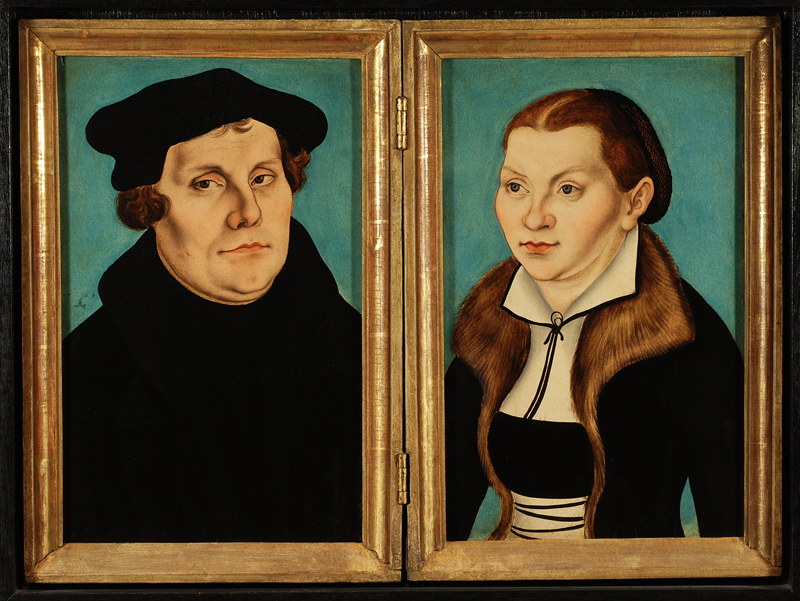
Abb. 1: Werkstatt Lucas Cranach d. Ä., Doppelbildnis Martin Luthers und Katharinas von Bora, 1529, Malerei auf Buchenholz, Hessisches Landesmuseum Darmstadt, KKL-Nrn. IV.M6a und IV.M6b
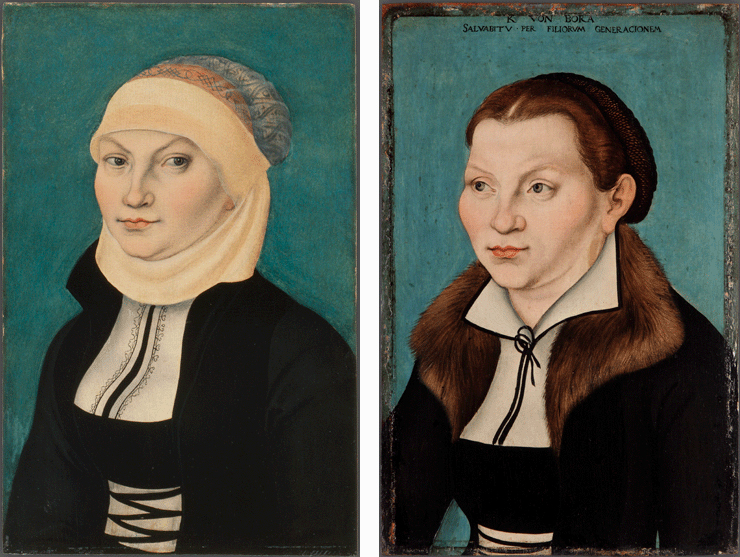
Abb. 2: Lucas Cranach d. Ä. [und Werkstatt], Katharina von Bora, 1528, Malerei auf Buchenholz, Kunstsammlungen Veste Coburg, KKL-Nr. IV.M2b neben Lucas Cranach d. Ä. und Werkstatt, Katharina von Bora, 1529, Malerei auf Buchenholz, Freie Hansestadt Bremen, Stadtgemeinde, KKL-Nr. IV.M14b
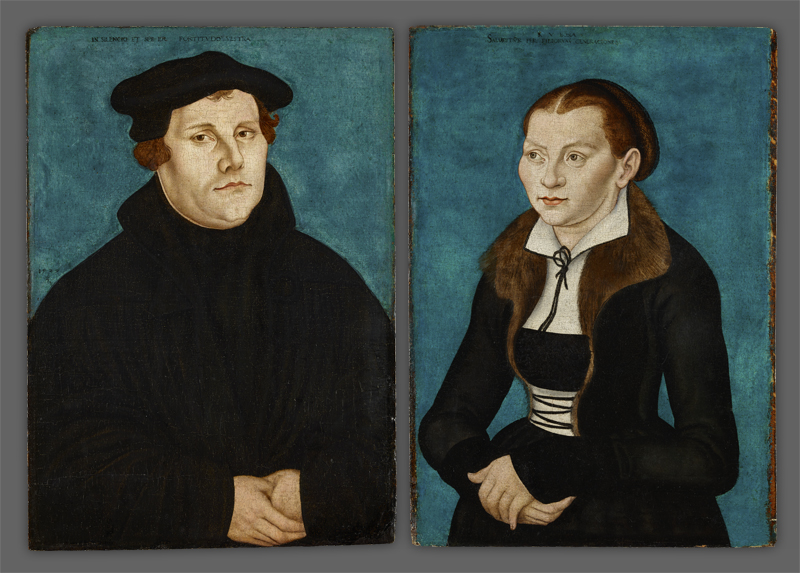
Abb. 3: Werkstatt Lucas Cranach d. Ä., Doppelbildnis Martin Luthers und Katharinas von Bora, 1529, Malerei auf Buchenholz, Stiftung Deutsches Historisches Museum, Berlin, KKL-Nrn. IV.M21a und IV.M21b
Group IV consists of portraits that show Martin Luther as a married man or as a reformer, wearing a cap and gown (fig. 1). Between circa 1528 and 1530 numerous examples belonging to this group were produced in the Cranach workshop.[1] The portraits of Luther as a married man usually appear in association with those of Katharina of Bora as double portraits in hinged frames as can be seen in surviving examples.[2] In addition to 22 portrait paintings known today (IV.M1 - IV.M15 und IV.M17 - IV.M23)[3] within the investigation period only two corresponding prints were identified. Both can be attributed to Georg Pencz (IV.D1 und IV.D2).
Over the years the Luther portrait was reproduced virtually unchanged, whereas the portrait of Katharina of Bora was soon adapted: the examples from 1528 show Katharina in a black lace up dress with a simple collar as well as a head and chin scarf (IV.M1b–IV.M4b). From 1529 the latter were replaced by the hairnet, which had already been in use since 1525, and a fur-trimmed collar was added to the dress (IV.M6b, IV.M7b, IV.M11b - IV.M14b, IV.M16, IV.M19b - IV.M21b). Her gaze also shifted towards her husband (fig. 2). This portrait type was retained for the later portraits from 1530.
The year 1529 not only saw a change in the representation type of the Bora portraits. As of this date an inscription was added to the top edge of the portraits (IV.M11 - IV.M24). This consisted of two biblical verses to which was added in some cases the name of the sitter. The Luther portraits bear the inscription ‘IN SILENCIO ET SPE ERIT FORTITVDO VESTRA’. This motto comes from Isaiah 30,15 and is translated by Luther himself as ‘in quietness and in trust shall be your strength.’[4] The faith or Fiducia implied here is central to Luther’s doctrine of justification. Why precisely this verse was chosen for the portraits can perhaps be understood within the context of Isaiah 30, 8: ‘Now go, write it before them on a tablet, and inscribe it in a book, that it may be a witness for the time to come for ever and ever.’[5]
The portraits of Katharina of Bora bear the inscription ‘SALVABITVR PER FILIORUM GENERACIONEM’. In Luther’s translation the verse reads ‘She will be saved through childbearing’.[6] The text from 1. Tim. 2,15 not only cautions women to do without precious jewelry, but moreover, in accordance with creation theology, instils in them an awareness of their subordination to man: according to Paul women will find fulfilment and salvation in their biological role as child-bearers if in addition they endeavour to live a life of faith, love and modesty.
In comparison with the militant text that appeared with the ‘Junker Jörg’ woodcut[7] the inscriptions accompanying the portraits from 1529 use a decidedly different language that seeks to find salvation in subordination and strong faith.
The panel paintings were produced in three different formats (fig. 3). An upright format of about 38 x 26 cm, that had already been used for the larger works in Portrait Group III, was produced in greater quantities (IV.M1 - IV.M19).[8] A second format is significantly larger with dimensions of about 53 x 37 cm, but the size of the portrait remains the same (IV.M20 - IV.M23). The image was adapted to the larger panel by simply extending the background.[9] The double portrait of Luther paired with Johann Friedrich of Saxony is an isolated case, being considerably larger in format at 76 x 56 cm. The composition is the same as the small format, correspondingly enlarged, and was probably not a serial production.[10]
[1] Although the Portrait Group has until now been dated on the basis of surviving representatives dated between 1528 and 1529, two examples dated 1530 (IV.M18 und IV.M23) confirm the seamless transition to the portrait type of Group V that emerges in 1530.
[2] The original grooved frame with two hinges has survived on IV.M6, IV.M11, IV.M12.
[3] IV.M24a is not combined with Katharina of Bora, but with Johann Friedrich of Saxony instead, and may not have been created until after 1530.
[4] WA Bible 11/I, p. 96, vers. 15.
[5] ibid., vers. 8.
[6] WA Bible 7, p. 264, vers. 15.
[7] See II.D1.
[8] Altogether 17 examples have survived: IV.M1 - IV.M15, IV.M17 - IV.M18.
[9] Supports in both these sizes were frequently used in the Cranach workshop from about 1520 for portraits in upright format or for other subjects in landscape format. The composition was then developed in accordance with the predetermined proportions and sizes of the wooden panels. See Heydenreich 2007, pp. 42-46.
[10] There are further characteristics of this double portrait that do not correspond with the other examples. See catalogue entry IV.M24.

Abb. 4: Werkstatt Lucas Cranach d. Ä., Martin Luther im Brustbild mit Barett, zur Seite blickend, ab 1530, Malerei auf Buchenholz, The Metropolitan Museum of Art, New York, KKL-Nr. V.M2
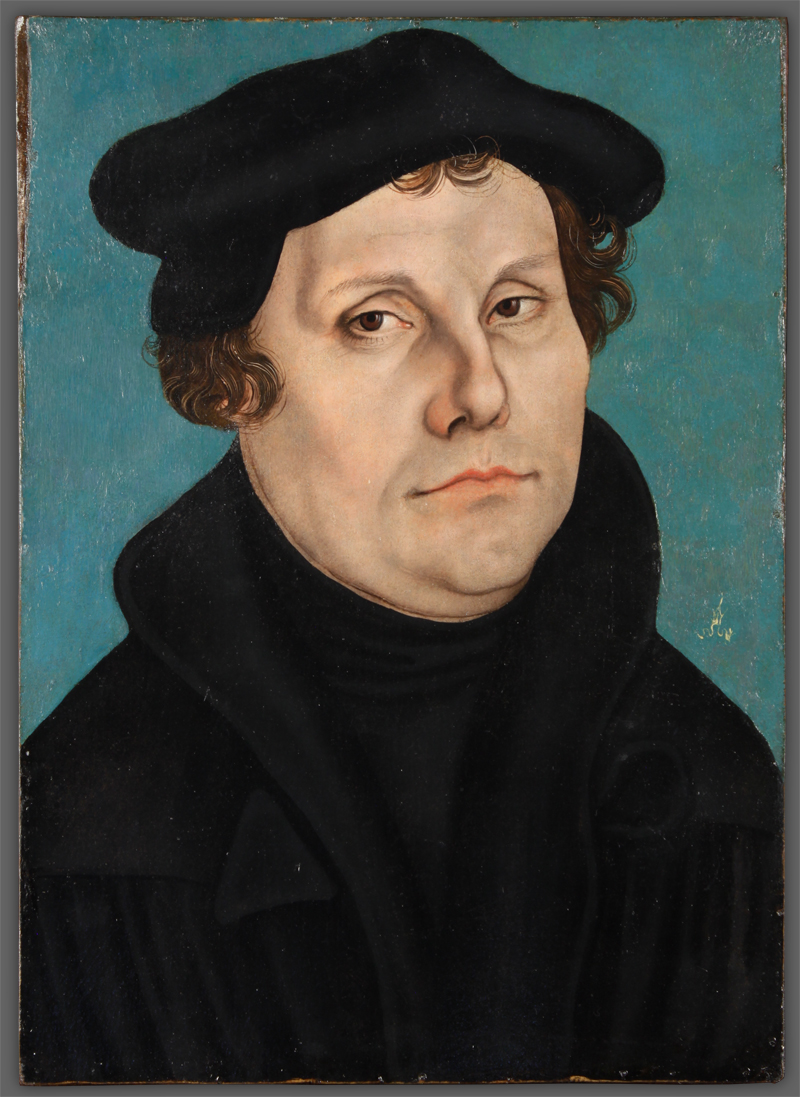
Abb. 5: Lucas Cranach d. Ä. [und Werkstatt], Martin Luther im Brustbild mit Barett, Blick frontal, um 1528-1530, Malerei auf Pergament auf Eichenholz, Privatbesitz, KKL-Nr. IV.M1
Despite the emergence from 1530 of a new variant, classified as Portrait Type V (fig. 4), albeit with only slight differences in Luther’s physiognomy,[1] the earlier portrait type continued to be produced in 1530 and later. Dendrochronological examination of eight panels[2] from this Portrait Group support the assumption that the year inscribed on the portraits records their production date. Findings on a ninth panel confirm that this particular example was created a few years later than the date specifies.[3] Results of the dendrochronological examination of a further two Luther portraits from other Portrait Groups[4] confirm that the copying of individual works over a number of years was not unusual within the workshop.
The panel paintings are to a large extent characterized by the consistent features of their production and provide a vivid picture of serial production within the Cranach workshop. From the choice of wood[5] to the preparation of the panel, the application of the ground, the underdrawing and the paint layers no significant differences were observed in the examples examined, with the exception of one portrait that was painted directly on parchment (IV.M1) (fig. 5).
[1] Luther is plumper and has more stubble, he looks to the side.
[2] IV.M2a, IV.M5a, IV.M6a, IV.M14a, IV.M15a, IV.M17a, IV.M23a, IV.M24a.
[3] The latest growth ring identified on the Luther portrait dated 1528 in Allerheiligenmuseum, Schaffhausen (IV.M-Sup01) is from the year 1531. The painting could not have been created before 1533, taking the minimum seasoning period of 2 years into account.
[4] A portrait in a private collection from Portrait Group III (III.M-Sup01), which was also examined depicts Luther as the representational type that prevailed from 1525-1526. The beech panel used for the support can be associated with a tree whose latest growth ring is from 1531 and could only have been created by 1532/1533. The Luther portrait (https://lucascranach.org/DE_HAUMB_GG23) is also painted on a beech panel with the latest growth ring dated 1533 and could accordingly only have been painted no earlier than 1536. See also Klein, 1994, p. 200 as well as Klein, Neuhoff in Exhib. Cat. Düsseldorf 2017, p. 258.
[5] Of the twelve works subjected to dendrochronological examination nine are most probably from a beech tree that must have had an impressive diameter as 183 growth rings were counted. See the KKL’s accompanying publication (in progress) for a cross-evaluation of the dendrochronological results of the Luther portraits.
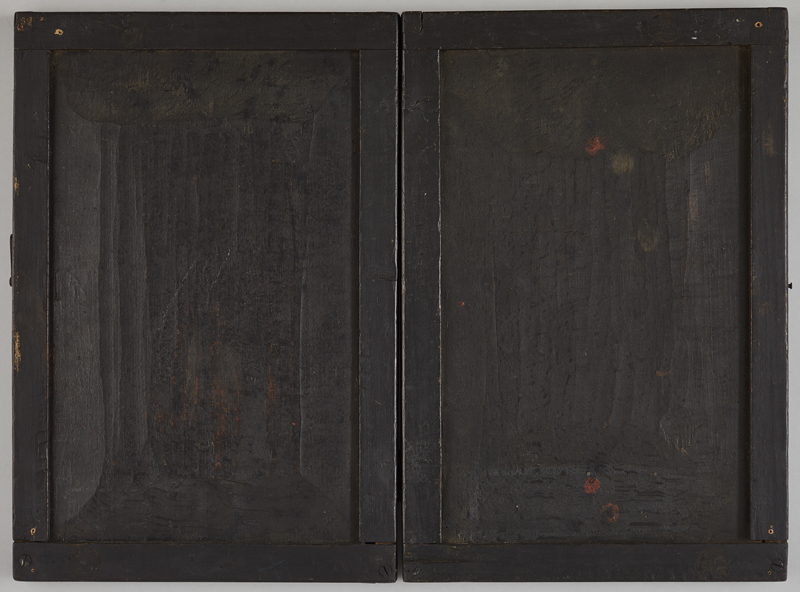
Abb. 6: Rückseite des Darmstädter Doppelbildnisses (IV.M6)
Whereas the smaller portraits[1] (IV.M2 - IV.M19) generally consist of a single upright board[2] that is bevelled along the edges of the reverse, the larger formats[3] (IV.M20 - IV.M23) are usually constructed from three horizontal boards (fig. 6).[4] Both panel sizes were only roughly smoothed with a plane on the reverse and the finished painting was then framed.[5] The examples in Darmstadt (IV.M6), Gotha (IV.M.11) and Bretten (IV.M12) have retained their original grooved frames and are hinged together.[6] A dark protective coating was subsequently applied to the reverse of some of the works.[7] Although it was common practice, in Cranach’s workshop as well[8], to paint the reverse of double portraits with a heraldic emblem or ornamental design no such decorative element was employed here.
[1] According to Heydenreich 2007, p. 43, Standard Format B.
[2] The version in Schaffhausen (IV.M-Sup01) consists of two horizontally aligned boards. The New York panel (V.M.2) of similar format, which belongs to Portrait Group V also consists of two boards that are however vertically aligned.
[3] According to Heydenreich 2007, p. 43, Standard Format C.
[4] Only the boards on the panel in Augsburg (IV.M24) are vertically aligned. The joints were then usually covered on both sides for example IV.M20 and IV.M24. For more on cloth and fibre applications see Heydenreich 2007, pp. 72-73 and Heydenreich 2017, p. 258.
[5] Only on IV.M14 and IV.M17 is the reverse carefully smoothed and without a coating.
[6] In addition written sources confirm that double portraits had hinged frames. The 1561 inventory of the Medici collection in Florence points out that the double portrait (IV.M7) could be used like a book („[…] a uso di libro […]“, quoted from de Luca 2017, p. 46, fn. 9). See also Dülberg 1990, pp. 34, 286–287, cat. no. 309.
[7] The dark brown to black coating that has survived on the reverse of many of the examples may have been renewed over time, however there are no traces of any other form of treatment. Only the versions in Bremen and Oschatz exhibit a carefully smoothed reverse without a dark coating.
[8] See the following example: [UK_NGL_6539] (https://lucascranach.org/UK_NGL_6539).
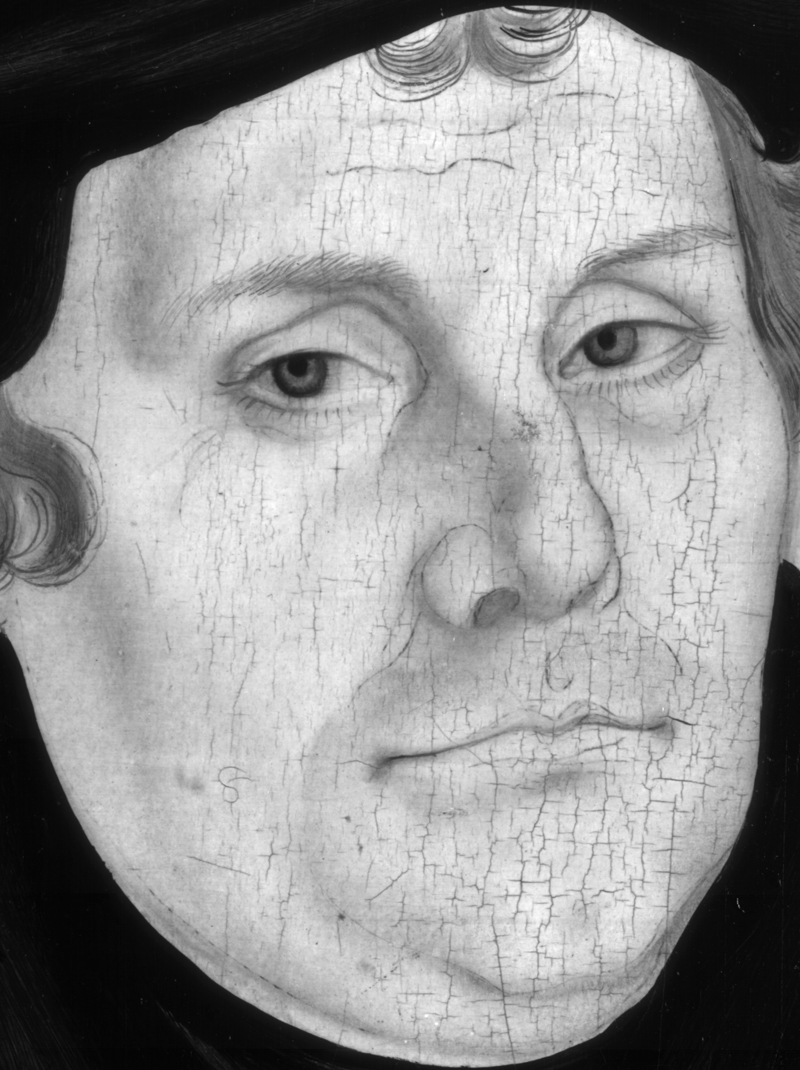
Abb. 7: Infrarotreflektogramm (Ausschnitt) des Bremer Lutherbildnisses (IV.M14a) mit deutlich sichtbarer Unterzeichnung
The underdrawing of the facial contours (fig. 7) and the extent to which the infrared reflectograms of different paintings correspond when superimposed suggest that the facial features were transferred from a template or pre-existing design to the prepared panel. The outer and inner contours are defined by consistently thin strokes. On numerous examples (IV.M2 - IV.M4, IV.M12, IV.M14, IV.M15) these thin lines appear in sections to be overlapped at regular intervals by thicker strokes of c. 1-1.5 mm in length and have the appearance of a broken line. Occasional double contours are also evident for example on the chin.[1] Both of these features suggest the use of a template.[2]
Greater discrepancies in the shape and size of the cap as well as the contours of Luther’s shoulder or the decoration of Bora’s dress may indicate a freehand underdrawing or that these areas were executed directly in paint.[3]
A particularly interesting phenomenon was observed on the portraits of Katharina of Bora dated 1529: in the underdrawing there is a curved line on the left near her forehead that appears to be without function and was not executed in paint. It can be explained by a comparison with earlier portrait versions where the bonnet or hairnet is depicted in this position. As this motif is present without exception on all the documented underdrawings it may be assumed that the underdrawing was transferred from a template to the examined works in a single operation, and that it was probably based on older drawings of an earlier portrait type. It is unclear whether the line was accidentally transferred or if the decision to change the image was made at a later stage. The phenomenon illustrates how serial production of single stages across many panels was employed to increase efficiency.
[1] Similar double contours have already been identified on a Luther portrait (IV.M15) by Most/Wolf 2009, pp. 90-91 and fig. 4 and were interpretated as evidence for the use of a stylus to transfer the design without mentioning the broken character of the line.
[2] Practical trials conducted to recreate this phenomenon will be assessed in KKL’s accompanying publication (in progress).
[3] In the process the contours of the shoulders and the cap occasionally appear to have been adjusted to correspond with the actual format of the support (see the catalogue entry for IV.M1). The execution of the collar fastener on Luther’s gown was also left to the individual workshop member. And so the clasp that originally consisted of a toggle on the right and a loop on the left is only partially or not represented at all. See Hänsch, Ottweiler, Der kuriose Knopf des Reformators, to be published in 2022.

Abb. 8: Bildcollage aus Detailaufnahmen vier verschiedener Exemplare einer Bildnisserie. Von links nach rechts: Stiftung Schloss Friedenstein, Gotha (IV.M11a), Kunstsammlungen der Veste Coburg (IV.M2a), Kunstsammlungen Boettcherstraße, Bremen (IV.M14a), Museo Poldi Pezzoli, Mailand (IV.M13a)
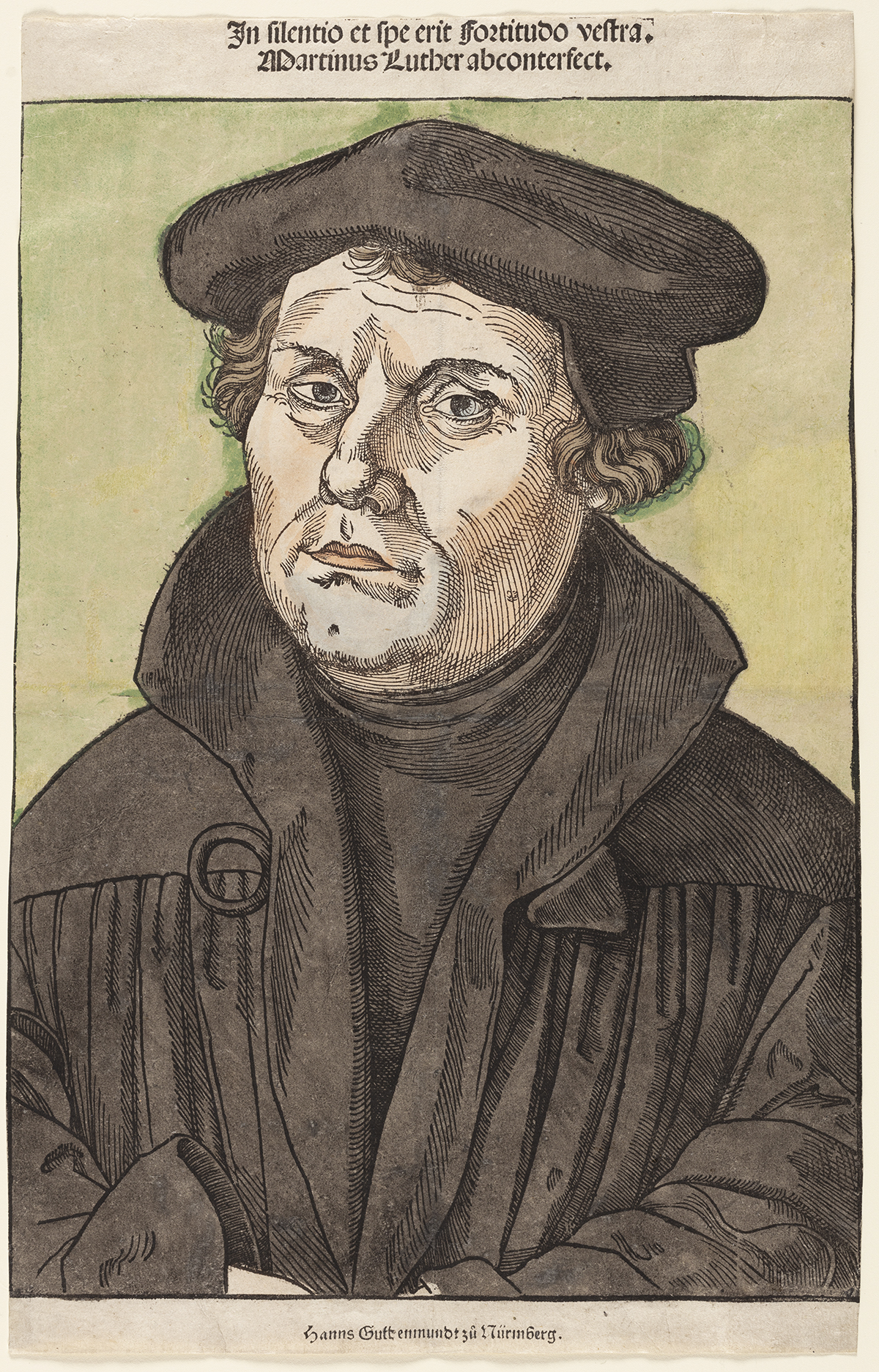
Abb. 9: Georg Pencz, Martin Luther mit Barett und Schaube, Halbfigur nach links gewandt, um 1530-1532, Holzschnitt mit Typendruck, Exemplar der Thrivent Collection of Religious Art, Minneapolis, KKL-Nr. IV.D1
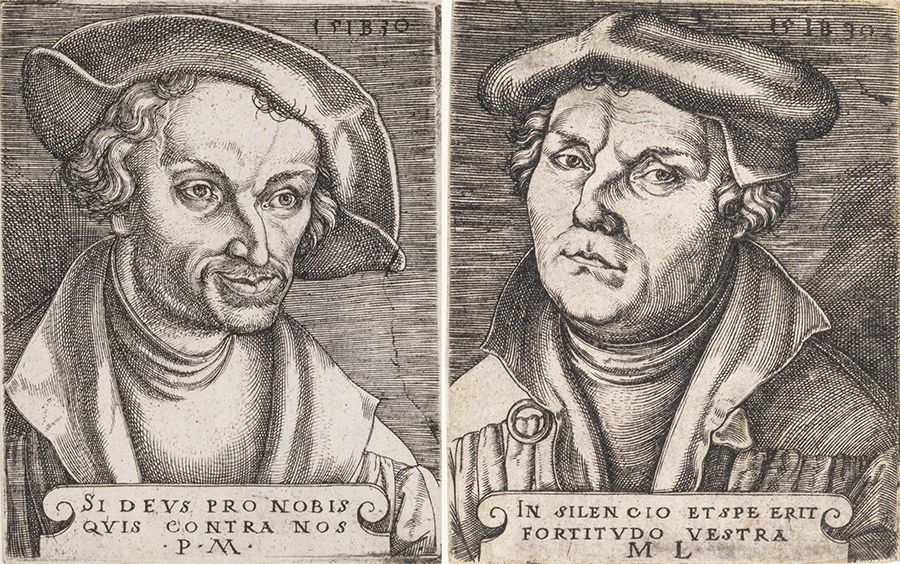
Abb. 10: Monogrammist IB/Georg Pencz, Doppelbildnis Martin Luthers und Philipp Melanchthons, 1530, Kupferstich, Exemplar des British Museum London, KKL-Nrn. IV.D2a UND IV.D2b
The majority of the double portraits exhibit a striking uniformity in their painterly execution (fig. 8). [1] Differences can be observed for example in the quality of finish in the flesh paint or in the execution of the azurite blue backgrounds.
Whereas single examples are distinguished by a particularly three-dimensional modelling of the flesh paint the skilful application of painted highlights others are of a lesser quality, exhibiting flat facial features and a reduced level of detail. These differences in the painterly quality also suggest the participation of different workshop members for this group.[2] The majority of the portraits have a vibrant background created by the application of glazes and the uneven opacity of the paint. However, on certain examples it appears much calmer because of the stippled or flat application of the paint. Some portraits appear to have been completed more quickly than others as the paint applications are smudged whereas on other works they overlap.
The serial production in the Cranach workshop culminated in these Luther portraits and those of the Electors completed about 1532. The Cranach workshop’s economic production process facilitated an early widespread distribution of the serial portraits across and beyond confessional and ideological borders. According to a household inventory from 1556 Georg Hörmann, an agent for the Fuggers and mayor of Schwaz/Tyrol owned ‘a portrait of Martin Luther and his wife […] completed on two panels’.[3] The versions in the Uffizi (IV.M7) were recorded in the Medici inventory as early as 1561.[4] In 1540 the Venetian artist Lorenzo Lotto also created this kind of double portrait, which must ultimately be traced back to Cranach’s work, possibly transmitted via printed medium.[5] Christoph Scheurl of Nuremberg assigned portraits of this type a place of honour ‘in the parlour’, as is documented in the inventory of his estate from 1542. There a double portrait of Luther and Bora hung in the company of portraits of emperors and dukes beneath an altan.[6]
After the portrait type had been reproduced in paint many times by the Cranach workshop it was also used from about 1530 in printmaking by Georg Pencz in Nuremberg (IV.D1) (fig. 9). Incised lines on the raised area of the unique woodcut attributed here for the first time to Pencz can be identified as marks from a scriber used to transfer the design to the block.[7] The small format engraving is also by Pencz (IV.D2a). Dated to 1530 it appears in combination with a companion piece of Philipp Melanchthon (IV.D2b) (fig. 10). Whereas the image dimensions of the woodcut closely correspond with the format of the painting, the reproduction in the engraving is reduced to a small format of 90 x 73 mm. The paper used for the impression of IV.D1 is also recorded in other Nuremberg printers at the same time.[8] Pencz also executed a variant of this portrait type in paint on a wooden panel[9], which has not been included in the KKL catalogue due to its later date of completion in 1533.
[1] This is evident in the soft modelling of the flesh paint that is worked up with glazes containing coarse black pigment particles, in the emphasis of the inner and outer contours with brown paint as well as a formulaic representation of details. For example the locks of hair were always built up in the same sequence with three different brown tones applied over a semi-opaque layer. The number of eyelashes and the manner in which highlights were applied also corresponds.
[2] See the individual catalogue entries.
[3] Cited after Hampe 1918, p. 35; see also Torggler/Weigel 2021, p. 83; the note does not indicate whether the panels are by Lucas Cranach the Elder himself or only draw on an original version by him.
[4] See de Luca 2017, p. 46.
[5] Entry in Lorenzo Lotto’s ‘Libro di spese diverse’ on the 17 October 1540: ‘[…] doi quadreti del retrato de Martin Luter et suo moier […]’, (cited after de Carolis 2017, p. 274)
[6] Household inventory of Christoph II. Scheurl, deceased 14 June 1542: „In der klain Fürsten=Stuben war auf zwayen eingefasten Tuchern Kaiser Karls und Herzog Georgs von Sachsen Bildniß, dagegen aber vnder der Althanen in der kamer gegen hof ein Gemälde, daran Doctor Marttin lutters vnnd seiner hausfrawen Connterfait.“ (cited after von Soden 1837, p. 89) (‘In the small Prince’s Chamber = were portraits of emperor Charles and Duke Georg of Saxony on two framed canvases, opposite but beneath an altan in the compartment towards the courtyard a painting, with Doctor Martin Luther and his wife portrayed.’)
[7] See the classification of IV.D1.
[8] The same paper, that is from the same mould and displaying the watermark of a ‘striding bear’, is from a paper mill in Bern. It was used by Hans Guldenmundt to print woodcuts by Wolfgang Resch after designs by Hans Brosamer ‘Martin Luther‘ (V.D1a; Impression Stiftung Schloss Friedenstein Gotha, Inv. no. 38,3) and Katharina of Bora (V.D1b; Impression Stiftung Schloss Friedenstein Gotha, Inv. no. 38,2). Both can be dated to the year 1530.
[9] See Dyballa 2014, pp. 266-268, no. B 2: Georg Pencz, Portrait of Martin Luther, signed and dated ‘GP 33‘, painting on softwood, 41 x 32 cm, private collection.